Abstract
Five pigeons were trained over 43 experimental conditions on a variety of concurrent variable-interval schedules on which the forces required on the response keys were varied. The results were well described by the generalized matching law with log reinforcement ratios and log force ratios exerting independent (noninteractive) effects on preference. A further analysis using the Akaike criterion, an information-theoretic measure of the efficiency of a model, showed that overall reinforcement rate and overall force requirement did not affect preference. Unlike reinforcement rate changes, force requirement increases did not change the response rate on the alternate key, and an extension of Herrnstein's absolute response rate function for force variation on a single variable-interval schedule is suggested.
Keywords: concurrent schedules, reinforcement rate, response force, choice, contrast, pecking, pigeons
Full text
PDF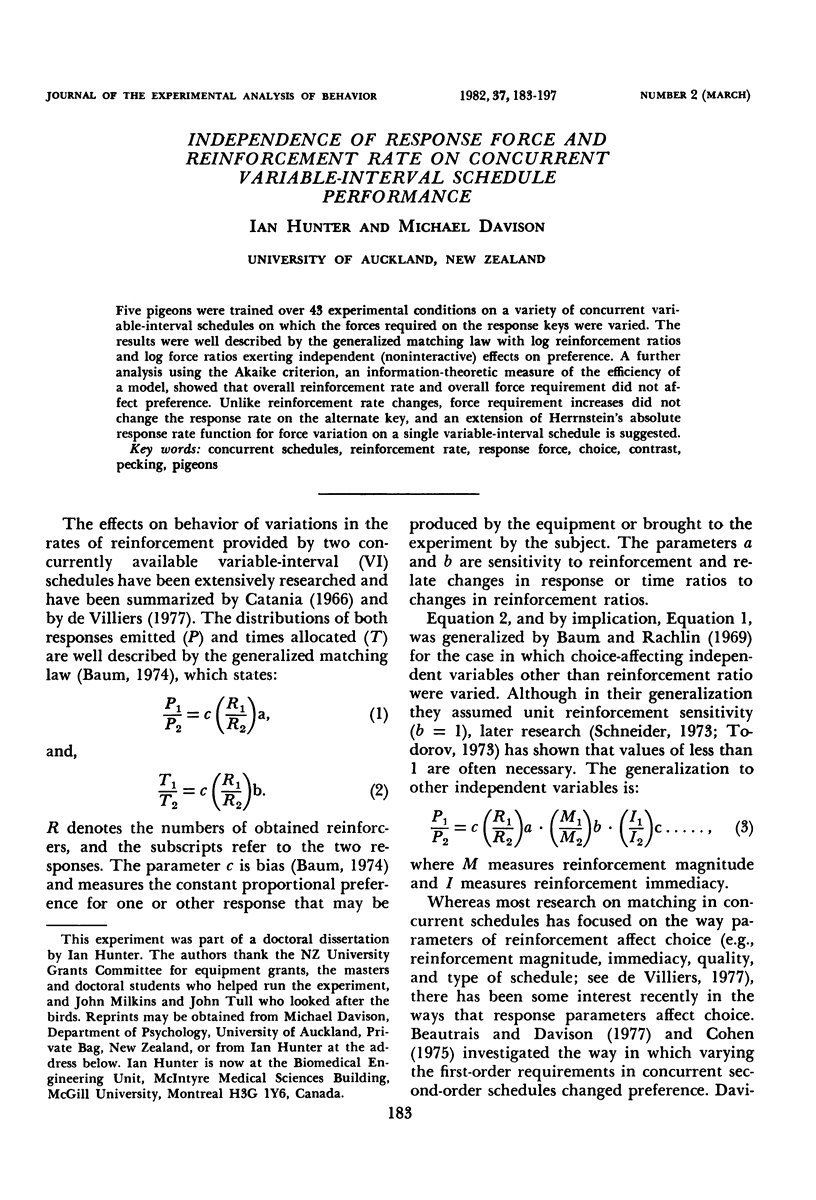
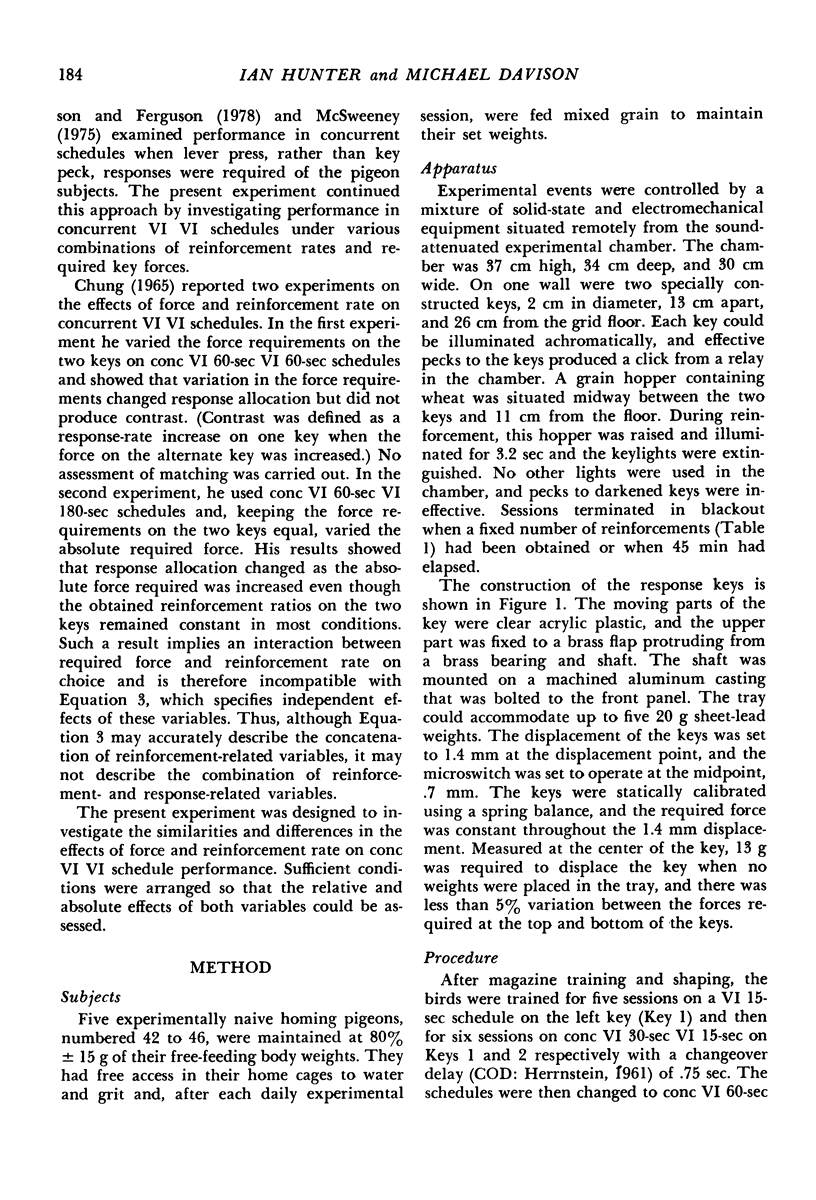
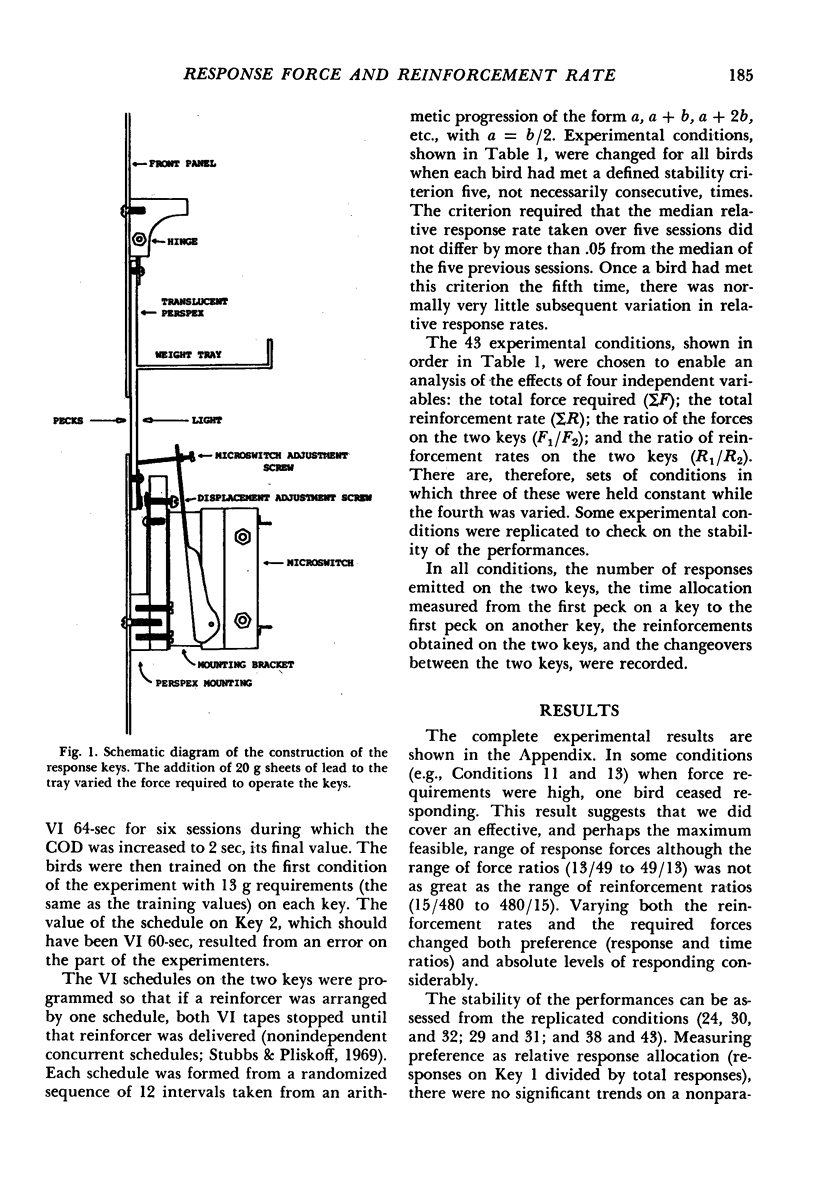
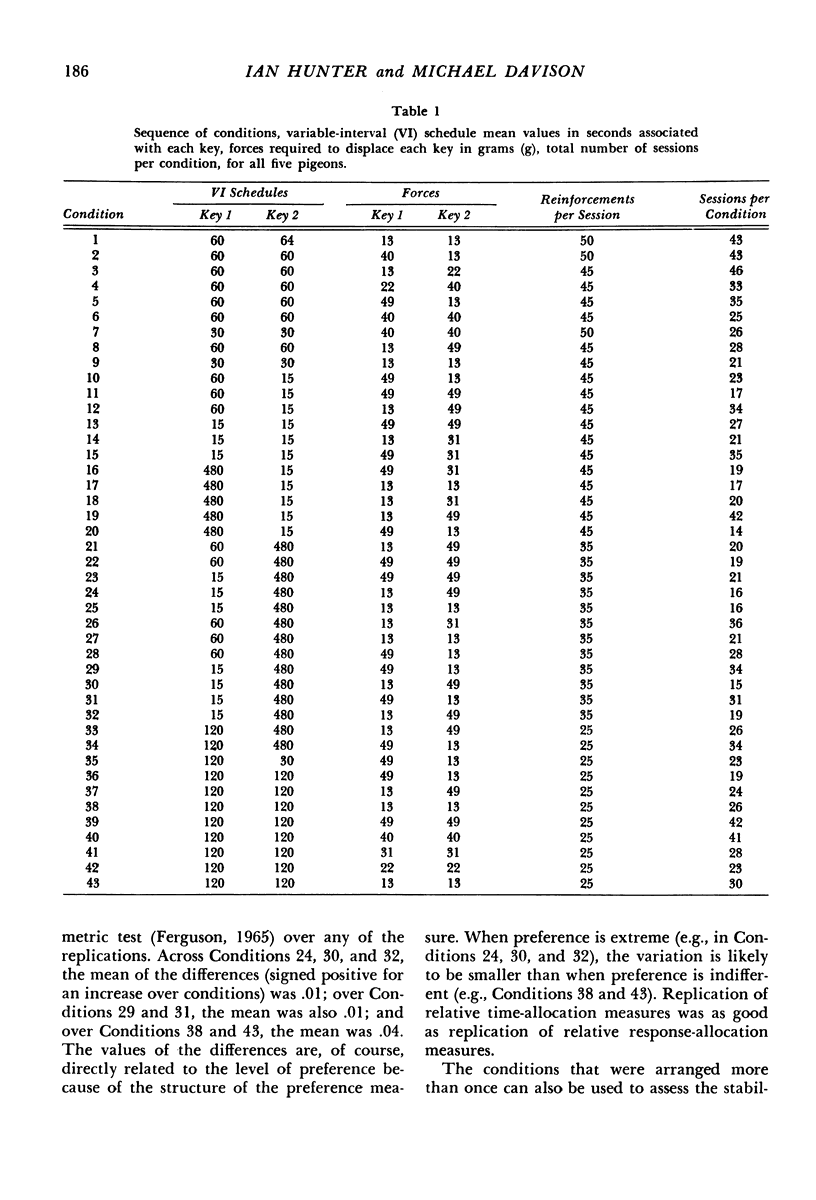
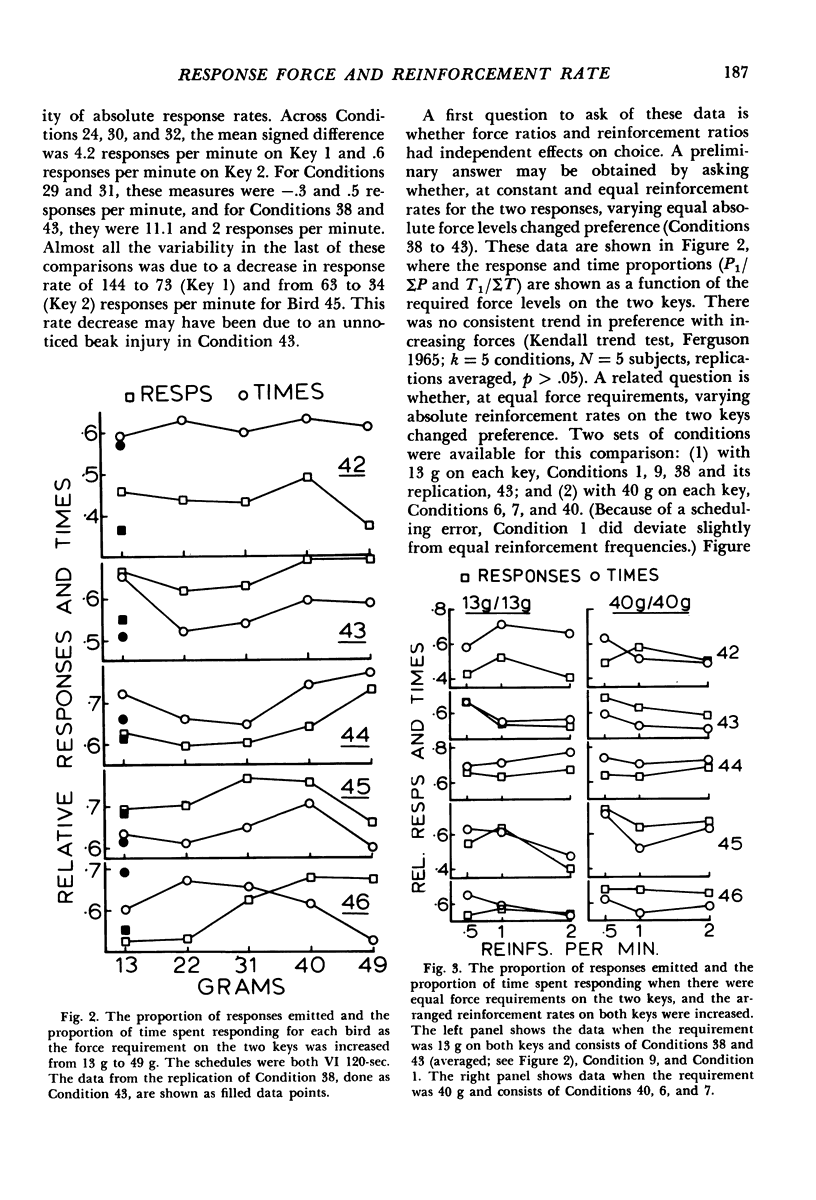
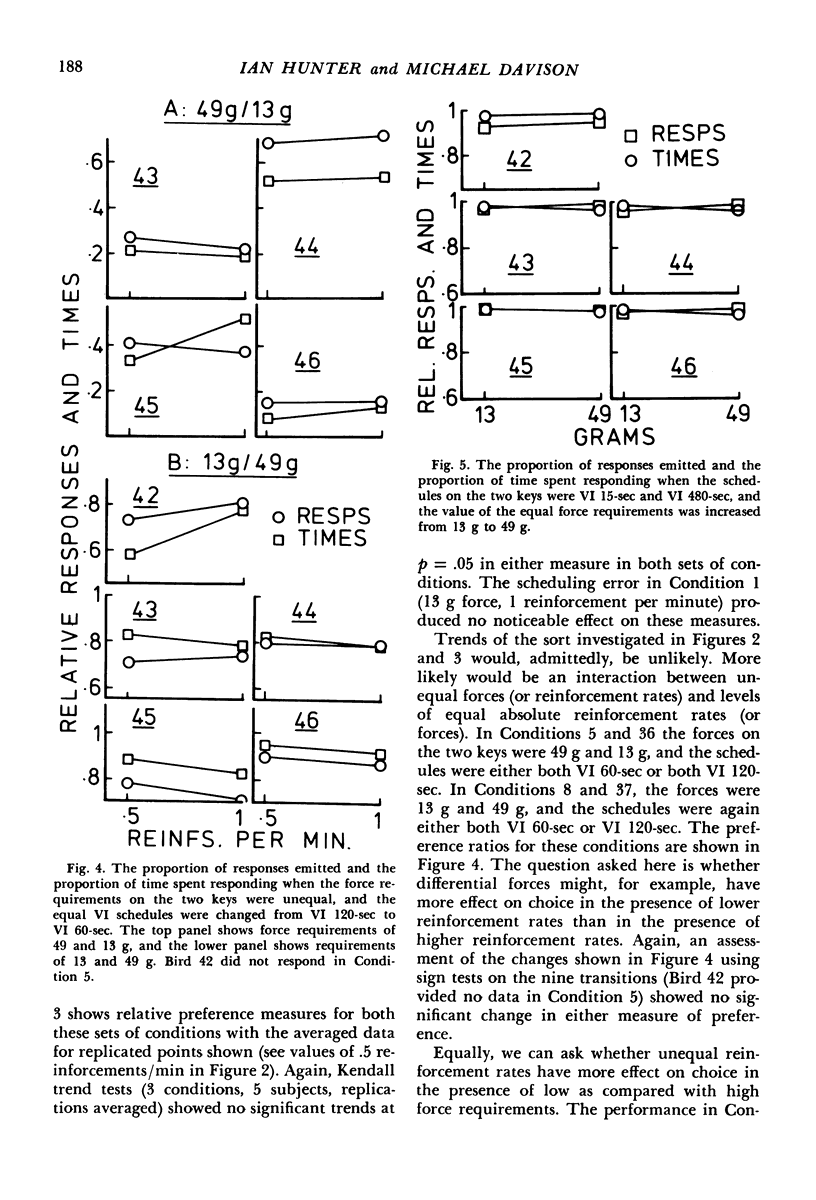
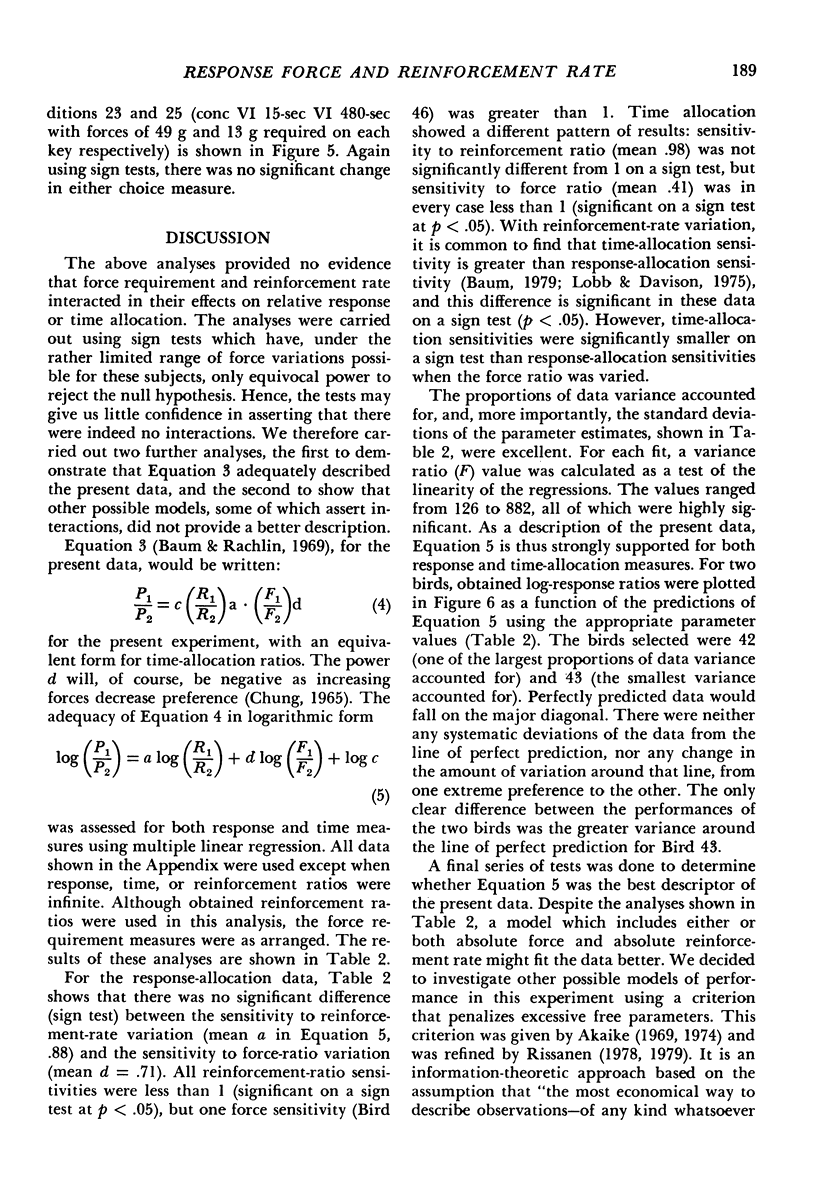
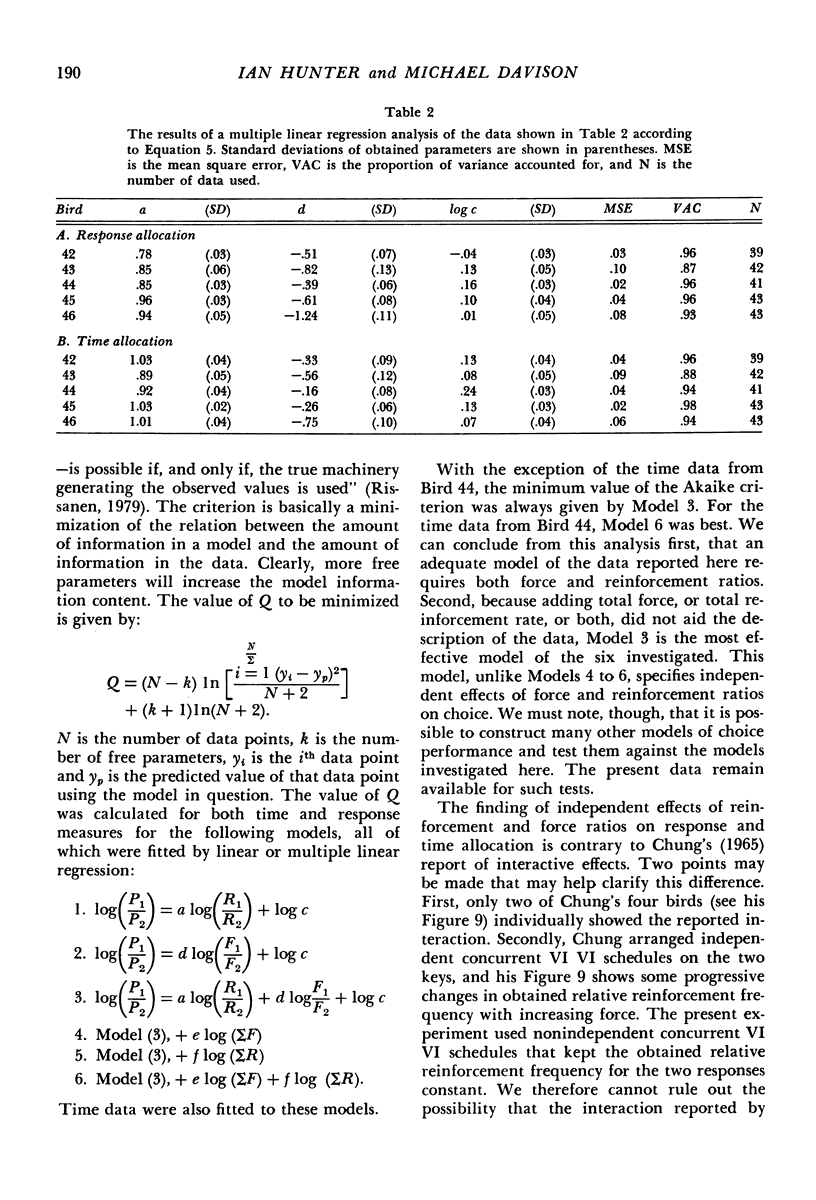
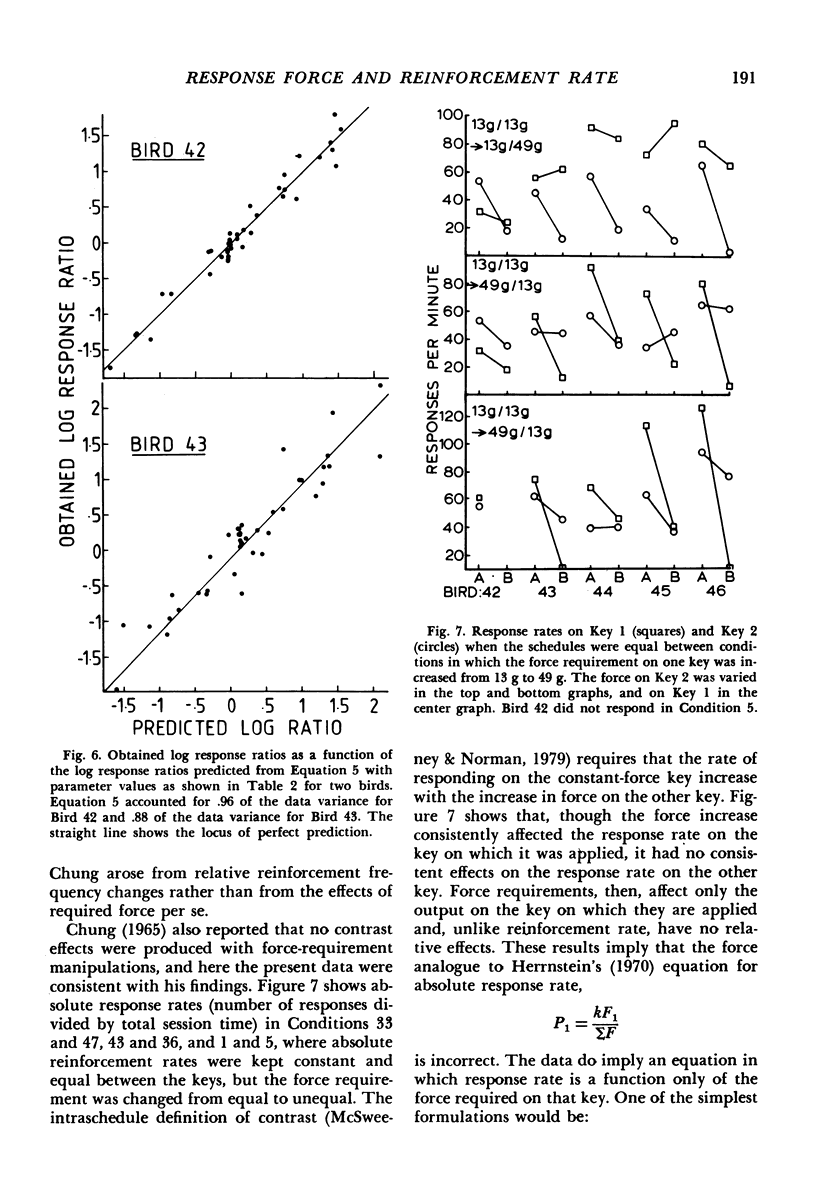
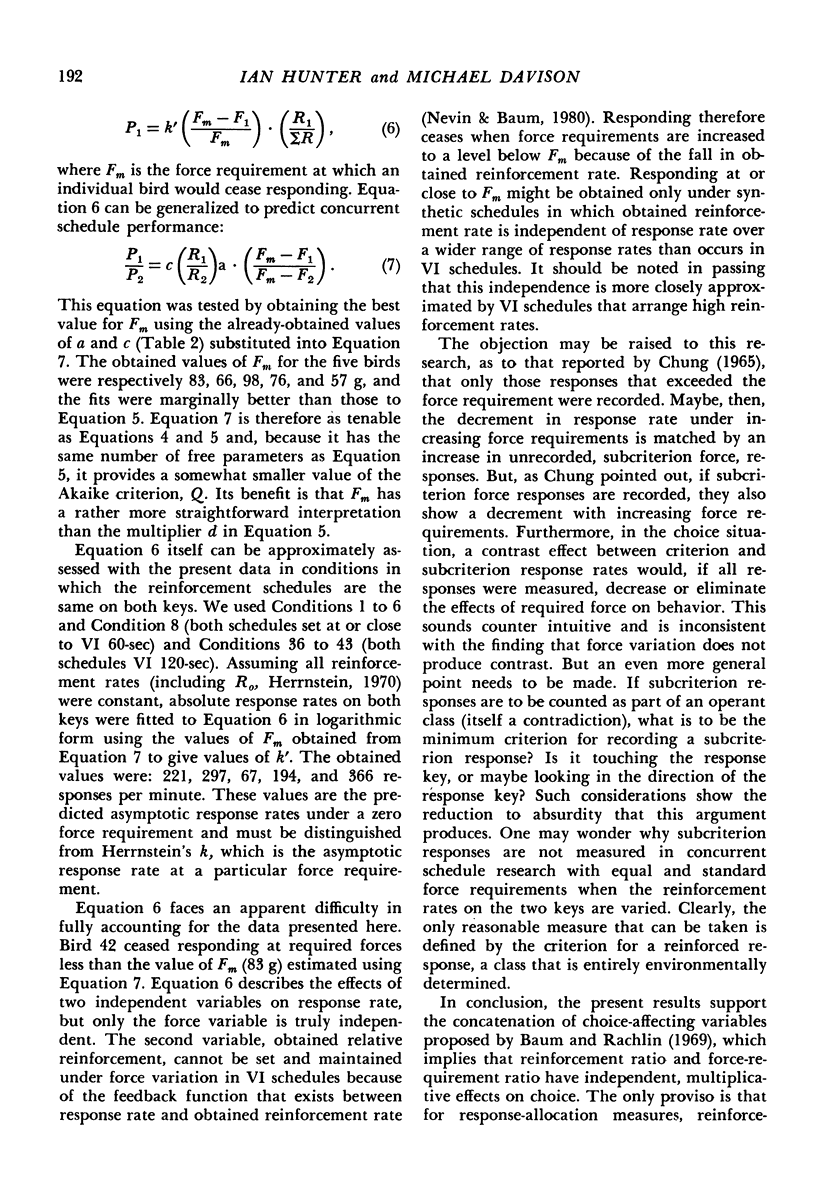
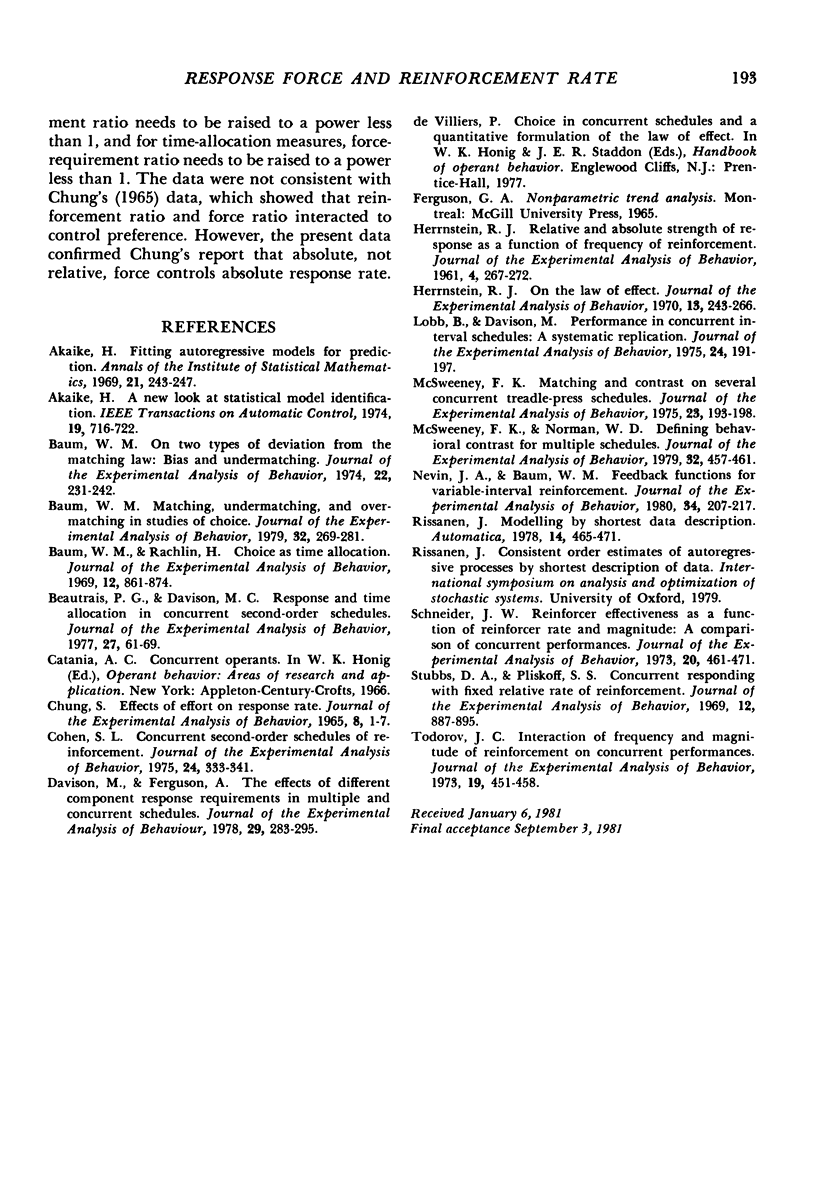
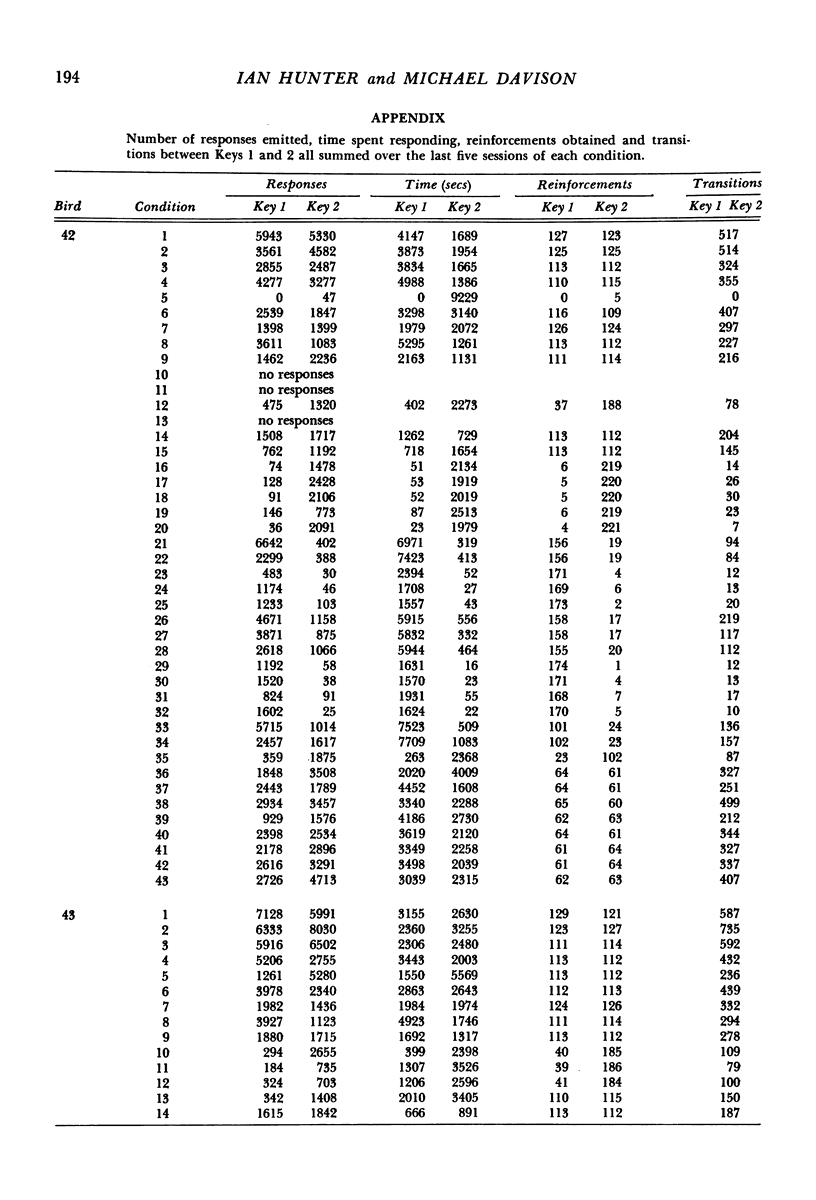
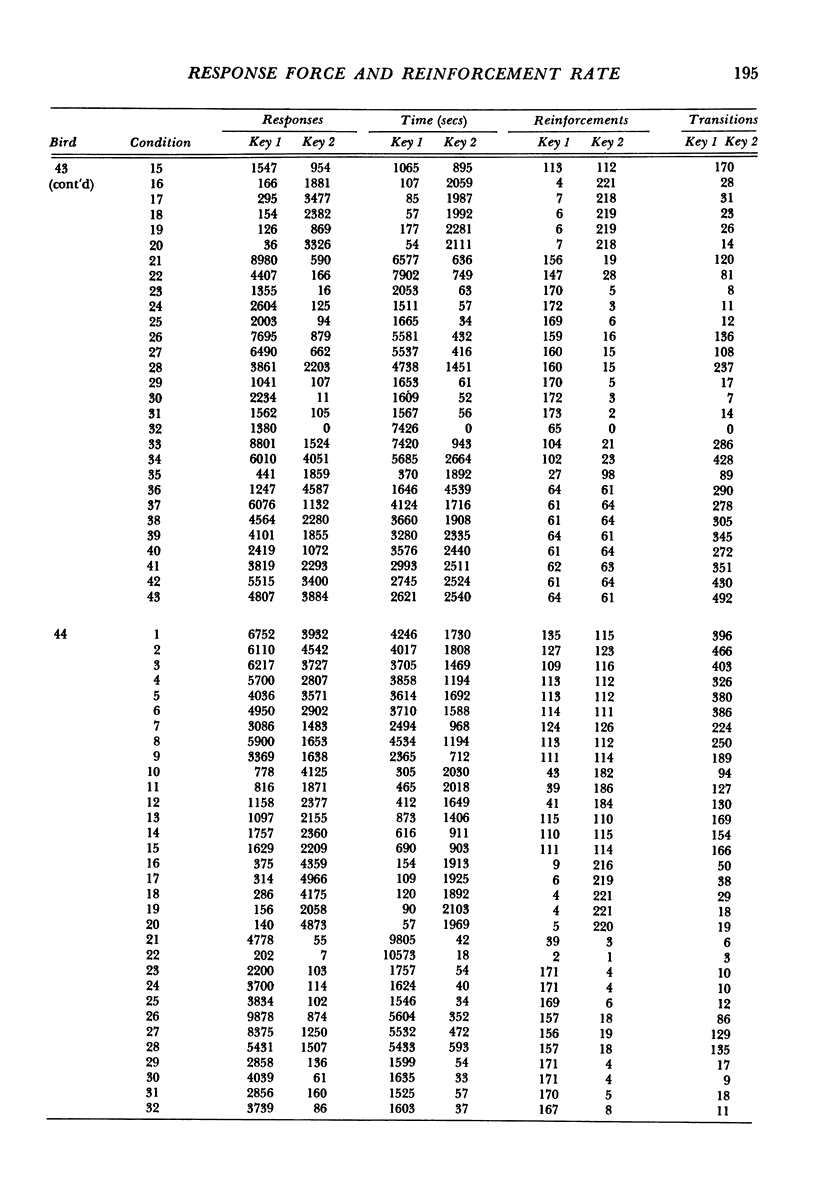
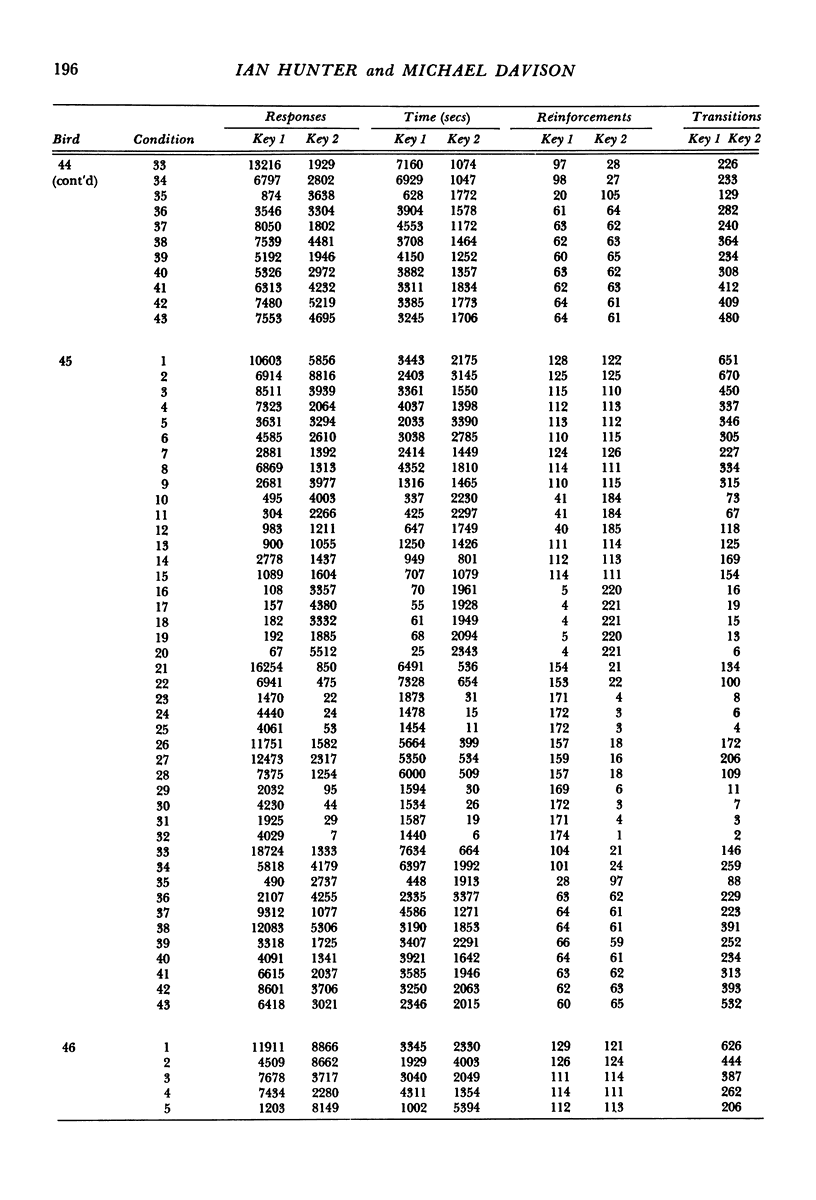
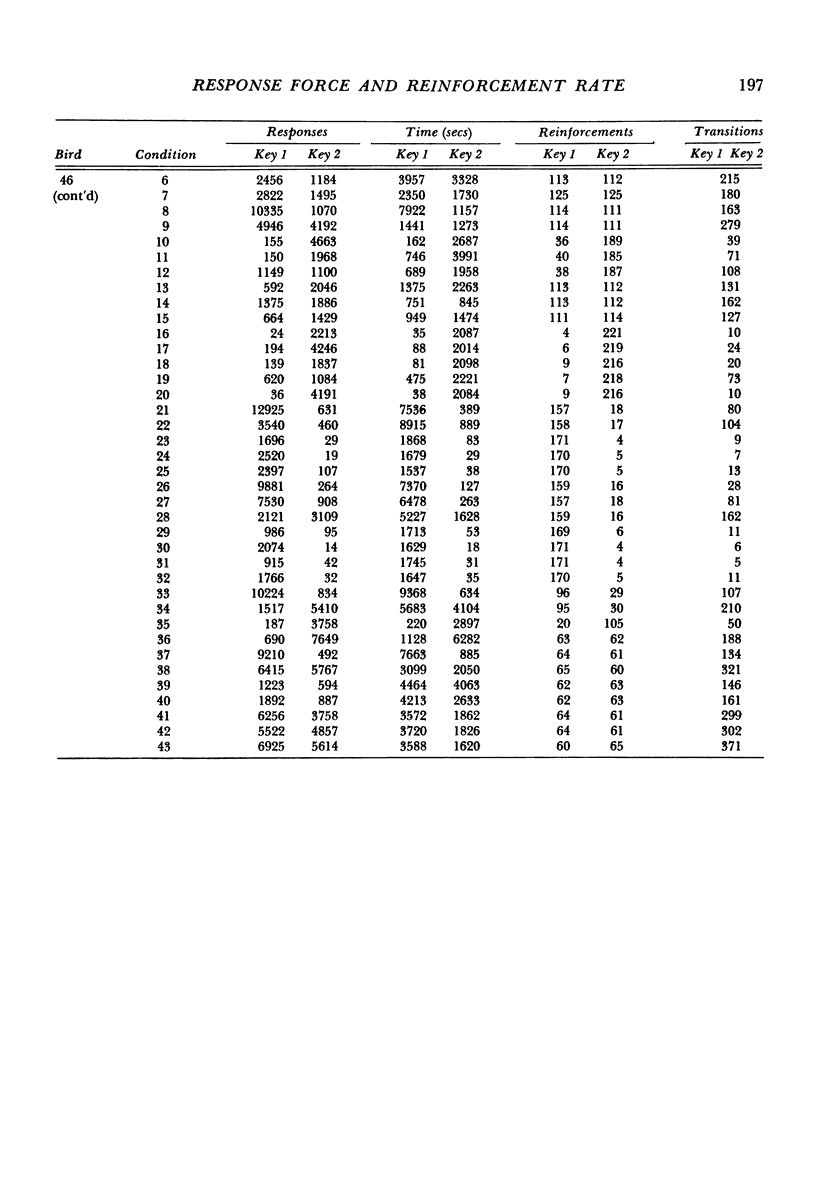
Selected References
These references are in PubMed. This may not be the complete list of references from this article.
- Baum W. M. Matching, undermatching, and overmatching in studies of choice. J Exp Anal Behav. 1979 Sep;32(2):269–281. doi: 10.1901/jeab.1979.32-269. [DOI] [PMC free article] [PubMed] [Google Scholar]
- Baum W. M. On two types of deviation from the matching law: bias and undermatching. J Exp Anal Behav. 1974 Jul;22(1):231–242. doi: 10.1901/jeab.1974.22-231. [DOI] [PMC free article] [PubMed] [Google Scholar]
- Baum W. M., Rachlin H. C. Choice as time allocation. J Exp Anal Behav. 1969 Nov;12(6):861–874. doi: 10.1901/jeab.1969.12-861. [DOI] [PMC free article] [PubMed] [Google Scholar]
- Beautrais P. G., Davison M. C. Response and time allocation in concurrent second-order schedules. J Exp Anal Behav. 1977 Jan;27(1):61–69. doi: 10.1901/jeab.1977.27-61. [DOI] [PMC free article] [PubMed] [Google Scholar]
- CHUNG S. H. EFFECTS OF EFFORT ON RESPONSE RATE. J Exp Anal Behav. 1965 Jan;8:1–7. doi: 10.1901/jeab.1965.8-1. [DOI] [PMC free article] [PubMed] [Google Scholar]
- Cohen S. L. Concurrent second-order schedules of reinforcement. J Exp Anal Behav. 1975 Nov;24(3):333–341. doi: 10.1901/jeab.1975.24-333. [DOI] [PMC free article] [PubMed] [Google Scholar]
- Davison M., Ferguson A. The effects of different component response requirements in multiple and concurrent schedules. J Exp Anal Behav. 1978 Mar;29(2):283–295. doi: 10.1901/jeab.1978.29-283. [DOI] [PMC free article] [PubMed] [Google Scholar]
- HERRNSTEIN R. J. Relative and absolute strength of response as a function of frequency of reinforcement. J Exp Anal Behav. 1961 Jul;4:267–272. doi: 10.1901/jeab.1961.4-267. [DOI] [PMC free article] [PubMed] [Google Scholar]
- Herrnstein R. J. On the law of effect. J Exp Anal Behav. 1970 Mar;13(2):243–266. doi: 10.1901/jeab.1970.13-243. [DOI] [PMC free article] [PubMed] [Google Scholar]
- Lobb B., Davison M. C. Performance in concurrent interval schedules: a systematic replication. J Exp Anal Behav. 1975 Sep;24(2):191–197. doi: 10.1901/jeab.1975.24-191. [DOI] [PMC free article] [PubMed] [Google Scholar]
- McSweeney F. K. Matching and contrast on several concurrent treadle-press schedules. J Exp Anal Behav. 1975 Mar;23(2):193–198. doi: 10.1901/jeab.1975.23-193. [DOI] [PMC free article] [PubMed] [Google Scholar]
- McSweeney F. K., Norman W. D. Defining behavioral contrast for multiple schedules. J Exp Anal Behav. 1979 Nov;32(3):457–461. doi: 10.1901/jeab.1979.32-457. [DOI] [PMC free article] [PubMed] [Google Scholar]
- Nevin J. A., Baum W. M. Feedback functions for variable-interval reinforcement. J Exp Anal Behav. 1980 Sep;34(2):207–217. doi: 10.1901/jeab.1980.34-207. [DOI] [PMC free article] [PubMed] [Google Scholar]
- Schneider J. W. Reinforcer effectiveness as a function of reinforcer rate and magnitude: a comparison of concurrent performances. J Exp Anal Behav. 1973 Nov;20(3):461–471. doi: 10.1901/jeab.1973.20-461. [DOI] [PMC free article] [PubMed] [Google Scholar]
- Stubbs D. A., Pliskoff S. S. Concurrent responding with fixed relative rate of reinforcement. J Exp Anal Behav. 1969 Nov;12(6):887–895. doi: 10.1901/jeab.1969.12-887. [DOI] [PMC free article] [PubMed] [Google Scholar]
- Todorov J. C. Interaction of frequency and magnitude of reinforcement on concurrent performances. J Exp Anal Behav. 1973 May;19(3):451–458. doi: 10.1901/jeab.1973.19-451. [DOI] [PMC free article] [PubMed] [Google Scholar]


